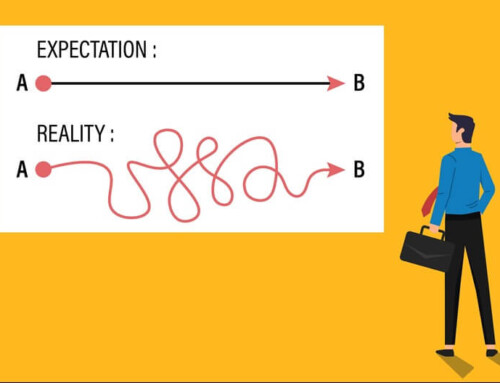Employers face the intricate balance of managing employee well-being with the need to maintain high productivity levels. While the positive impacts of regular breaks are well-supported, many employers still express concerns that extended or frequent breaks might be misused, potentially affecting employee output. (1) At the same time, managers find themselves under pressure to raise productivity levels in an increasingly competitive environment. (1)
This pressure often leads to doubts about whether employees are maximizing their break times, thereby creating a tension between the necessity for rest and the drive for efficiency. These concerns, while relevant in isolated cases of limited direct oversight for remote workers, do not match with current studies. (7)
Regular breaks have the potential to enhance productivity, boost engagement, and foster creativity among employees. These benefits are supported by research, including a study involving over 10,000 participants from the U.S., U.K., Australia, France, Germany, and Japan.
- The study found that employees who regularly took breaks were 13% more productive than those who did not.
- Breaks contributed to a 62% improvement in work-life balance, a 43% increase in stress and anxiety management, and a 43% rise in overall job satisfaction.
- Employees who refrained from taking regular breaks reported feeling 1.7 times less satisfied with their work environment compared to their counterparts who embraced breaks.
These findings underscore the significant role of breaks in enhancing employee well-being and organizational success. (2)
SIGNIFICANT INFLUENCES ON WORKPLACE BREAKS
Economic conditions significantly influence organizational expectations and employee mindsets regarding regular or mandated breaks. In a labor surplus market, employers may impose higher demands on employees, confident in the large applicant pool available to fill any vacancies. This can create a work culture that indirectly discourages breaks, as taking time away may conflict with the organizational goals of maintaining high productivity and competitive advantage.
Forward-thinking leaders are reimagining the workplace by recognizing that effective breaks are crucial to innovation and enduring success, regardless of applicant pool size. They understand that breaks aren’t merely for resting; breaks are vital for maintaining a vibrant and effective workforce. This shift towards valuing breaks is driven by their role in mitigating stress and burnout (3), fostering an environment of trust and support (3), and ultimately leading to greater employee engagement and reduced turnover. (7)
Additionally, the increasing diversity of global, multi-generational workplaces necessitates integrating break policies as a core component of organizational health and employee retention strategies (4, 5). The outcome? Companies implementing formal break policies, such as The Energy Project have reported a 23% increase in employee engagement after implementing regular breaks (6). By embedding breaks into the organizational culture, leaders not only enhance productivity but also nurture well-being, leading to a more motivated and resilient workforce.
WHY REGULAR BREAKS ARE GOOD FOR BUSINESS
Encouraging your employees to take breaks is not merely an act of kindness; it’s a strategy that positively impacts your business. Regular breaks offer substantial benefits, contributing to overall business success.
Increased Productivity
Just as the body requires sleep for physical recovery, the mind also needs rest to rejuvenate. Short breaks allow employees to recover from mental fatigue by replenishing intellectual resources. This process enhances cognitive functions, enabling employees to solve problems more effectively, process information faster, and think more clearly.
Higher Motivation Levels
Motivation is often linked to a sense of progress. When employees work continuously without breaks, they may feel they are making little headway, leading to diminished motivation. Short breaks help segment the day into manageable parts, providing a sense of accomplishment that fuels motivation.
Improved Job Satisfaction
Employees need to feel that their employers value their need for rest. Expecting constant work without adequate breaks can lead to dissatisfaction, reduced performance, or even turnover. By supporting break times, you foster gratitude and respect, increasing overall job satisfaction among your employees.
More Protection from Burnout
Burnout, characterized by mental and physical exhaustion, can diminish job satisfaction and engagement. By taking regular breaks, employees can return to their tasks revitalized, reducing the risk of burnout and enhancing their capacity to tackle challenges effectively.
Increased Creativity
Mental fatigue hinders creative thought, making it difficult for employees to innovate when exhausted. Allowing workers to take short, frequent breaks helps maintain their creativity, ensuring they can approach tasks with imaginative and fresh perspectives.
HOW TO EFFECTIVELY INTEGRATE BREAKS INTO COMPANY CULTURE
Encouraging employees to take breaks involves more than just verbal affirmation—though this is a key component. The following strategies can help successfully integrate breaks into your company culture and make taking them a normalized, valued practice.
Put It in Writing
If your company policies currently discourage, or even imply a discouragement of breaks, these should be updated immediately. Providing written guidelines shows employees that the company officially supports regular breaks. Avoid specifying the exact number or duration of breaks, as the appropriate work-break cadence varies across different roles. It is crucial to prevent employees from feeling constrained by rigid guidelines.
Consult with your legal advisor regarding any relevant laws to ensure compliance with break policies. Once policies are revised, communicate the changes to employees via a company-wide email with the updated guidelines attached. Briefly explain the reasons behind the policy updates and emphasize the importance of supporting employees in this way.
PRO TIP: Offer extended 90-minute breaks to allow employees to engage in activities that enhance focus or well-being such as exploring in nature, or participating in a creative workshop. You can also consider personal recharge retreats where employees can take 30 days away from the office for personal growth, mental health or relax in a different setting.
Communicate Your Pro-Break Outlook to New Employees During Onboarding
Create a positive first impression for new hires by informing them about the company’s supportive stance on breaks during the onboarding process. You could even include a document for them to sign, pledging to take necessary breaks to ensure optimal performance. Demonstrate commitment to this initiative by scheduling breaks into the onboarding sessions themselves.
Get Buy-in From Leadership
This strategy requires leadership endorsement beyond mere approval. Explain the significant impact on employees when they see leadership practicing what is preached by taking regular breaks. Employees often model their behavior after leaders; thus, leadership should set an example to encourage company-wide adoption.
Initiate Conversations About Breaks
To dispel any stigma associated with taking breaks, open communication is essential. Managers should lead discussions on the benefits of short rest periods and why the company advocates for them. Consider introducing specific subtopics, such as creative break ideas and hosting question-and-answer sessions about taking breaks.
ACTIVATE EMPLOYEE SUPERPOWERS
While your employees may be mere mortals, they possess extraordinary “superpowers” that can be unlocked through the regular use of breaks. These superpowers—enhanced productivity, increased engagement, and greater creativity—can significantly benefit your business. The minimal time invested in regular breaks will be more than compensated by improved employee performance and heightened job satisfaction.
For information about planning a corporate meeting to supercharge your leadership team, contact Gavel International to learn more.
This article was last updated on May 8, 2025
- Gavel International Turns Giving into Holiday Joy in 2025 - December 23, 2025
- A Leader’s Change Playbook: From Direction to Adoption - December 15, 2025
- Sample the Exotic Bajan Flavors and Inspiring Settings of Barbados - November 17, 2025






